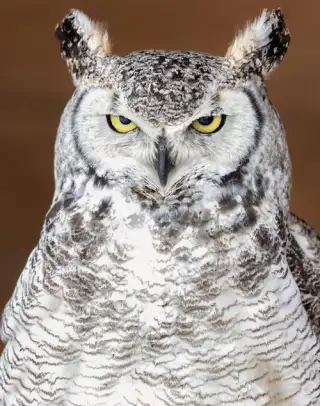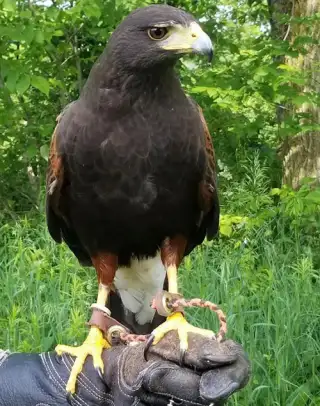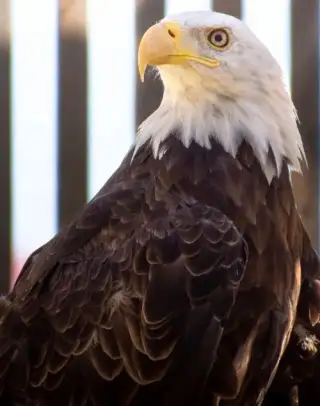Hawkeye Bird and Animal Control uses Birds of Prey as a natural and humane way to control behavioral patterns of pest birds such as grackles, pigeons, geese, sparrows and starlings. Taking advantage of the natural relationship between predators and prey, our raptors are trained to scare and chase pest birds from any given area. Pest birds quickly learn that the area is not safe and keep their distance. Falconry provides faster and longer-lasting bird control results than other 'scare' methods such as electronic noise makers, shooting or trapping alone. For absolute best results, we use falconry in conjunction with other methods. Falconry is truly nature's way of bird control.
Raptors/Birds of Prey used in Falconry include:
 Falcons:
Falcons:
Family: Falconidae
Small to medium-size birds with long pointed wings making them particularly swift flyers. Falcons take over the old nests of other birds instead of building their own, and will occasionally lay their eggs on cliff ledges or in the hollows of trees. Includes; Peregrine and Gyr Falcons and American Kestral.
 Owls:
Owls:
Owls are generally specialized for low light and nighttime hunting. They have specialized feathers to reduce air turbulence over their wings, allowing them hunt with total silence. Owls have great eyesight and incredible hearing. Includes; Great Horned, Barn and Eurasian Hawk Owl.
 Hawks:
Hawks:
Accipiters - Medium sized hawks that are ambush-type hunters, swopping down from a concealed perch to catch their prey. They have excellent eyesight and long tails for steering in tight areas. Includes; Goshawks, Coopers and Sharp-Shinned Hawks.
Buteos - Larger Hawks with wide wings for soaring in the sky looking for prey in large open areas. They are also referred to as Buzzards. Includes; Red-tailed, Red-Shouldered and Broad-winged Hawks.
 Eagles:
Eagles:
The largest birds of prey with long and wide wings and massive talons for grabbing prey. Booted Eagles have legs and feet covered




